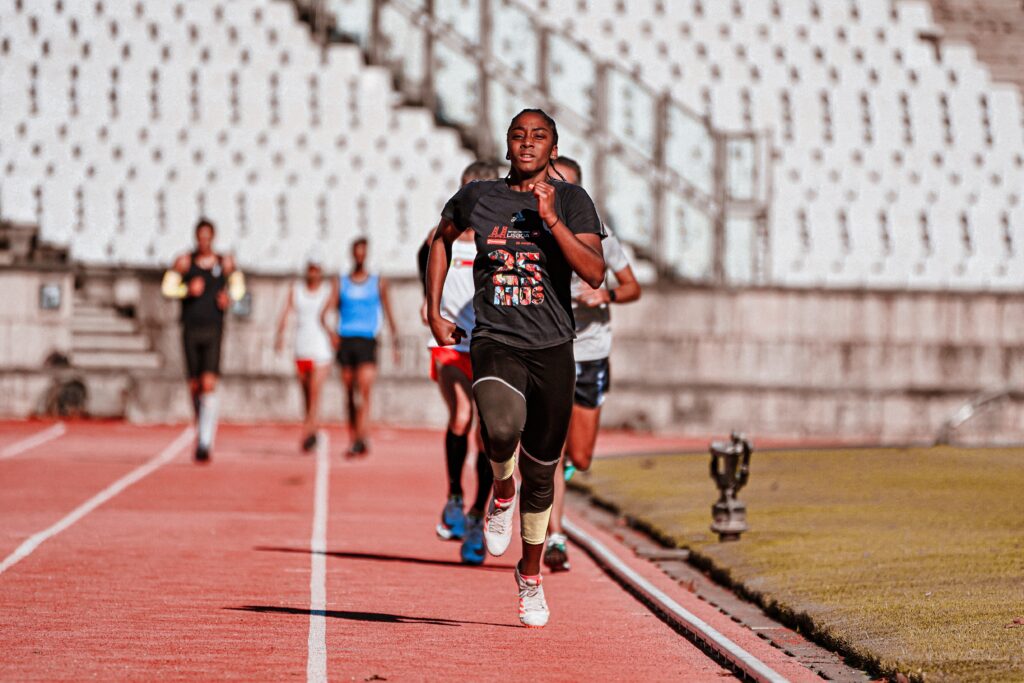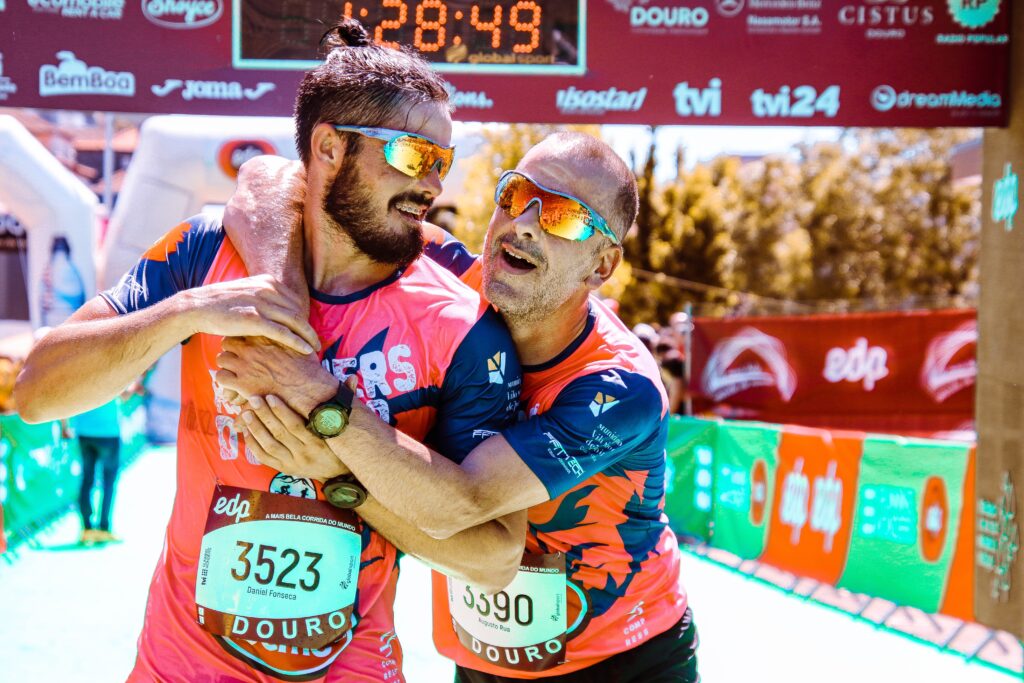No matter where the motivation or thought came from, many of us started with a simple thought “I’ve always wanted to run a marathon”. However, this realization is often followed by a sudden “Now where do I start?” Many of us stop there and let our self doubt take over. We often tell ourselves that we don’t have the time, maybe convince ourselves that we aren’t physically able, or worse yet, we trick ourselves into the notion that we aren’t good enough to even try.
I truly feel sorry for those people. As someone embarking on the same journey, I hope that these people revisit their self doubt, yell back at it, and realize that they can do anything that they put their mind to. For those of us that have had that conversation with ourselves and determined that we are going to give this dream ours all we have; welcome to this guide to training for a marathon.
What is your Motivation?
Having established that we want to pursue this path or journey, we must now determine our motivation. Why is it that we want to push our bodies to an extreme simply to pass from point a to point b? Is it to prove to ourselves that we can? Is it to prove to others that we can? Or simply is it because we enjoy the process and love to run?
Determining your motivation for pursuing this journey is key to keeping yourself focused over this sometimes arduous stretch. At times, the training and repetition is going to take a heavy toll on your mind, body and spirit. Everyone is going to have different motivations. However, being the individuals that we are, each of us needs to be clear of ambitions. On this journey, it is important to remind yourself daily of these goals in order to keep focussed and moving forward.
*A great idea is to write your motivations and goals down somewhere. In addition, be sure to keep it somewhere where you are going to see it everyday to remind yourself about why you are doing this. The more things that you have to remind yourself about your motivation the better you are going to fair in your journey.*
Be Aware of your Limits!
Now that we have a clear idea of our motivation, we need to determine some of our limitations. The earlier we recognize our limits the sooner we are able to correct them, work through them or determine alternatives to them. Things such as timing, overall health, weight, even sensitivity to cold or heat (depending on where you live and time of the year) all should be taken into consideration.
- On a sheet of paper draw a line directly down the center.
- On the left side of this sheet of paper, write a list of some of the limiting factors that you foresee coming up during your training. After you have uncovered several possible limitations, on the right side of the paper, come up with some solutions to those limiting factors.
For instance, someone that believes themselves to be overweight would put “40 pounds over desired weight,” on the left side of the paper. Then, on the right side they can list solutions to lose the 40 pounds. Examples of solutions could be “walk x distance everyday”, “begin that diet Robyn recommended”, “cutting out sugars from my diet”.
In most cases your limits can be solved. Or, at the least small, consistent actions can be taken over time to overcome your limits. The process starts with actions taken!

Choosing your First Marathon
Choosing your first Marathon is a big key to your preparation and training schedule. If you pick one in a hot or cold climate you are going to need to prepare for that. Moreover, the date of the race will greatly determine your training regiment. In other words if you choose a race that is next month, you are not going to have time to prepare properly for the race. On the flip side, if the race you wish to do is more than 6 months away then you are going to have to keep yourself motivated to train for a long period of time.
Only you can determine the race that you want to do and how much time you think you need to prepare for that race. The typical training program for a marathon is 12 to 16 weeks. People with more race experience and a stronger running base will be on the shorter end and total beginners without the healthiest lifestyles will sometimes be even longer.
With that being said there are outliers that exhibit such determination and self discipline that they have gone from an extremely unhealthy lifestyle to running a marathon in just a few short months. I would not necessarily gauge your goal assessment on this basis.
Some other factors to take into consideration when choosing your first marathon are the size of the marathon and the terrain of the course. Marathons come in all different sizes and shapes. There are big city marathons with thousands of participants and spectators. In addition, there are marathons that are located in smaller cities or communities with fewer participants and spectators.
Before entering in your first marathon, be reflective and decide whether find motivation from large crowds or if you would prefer a smaller more intimate setting. Whatever your decision, be confident in your choice, and ready to focus inward and crush your goals!
Terrain is another factor to take into consideration when choosing a marathon. Do your research on the course before you choose. For instance, imagine during your research you come across a scenic marathon in Colorado. The landscape, is spectacular, the crowd size is moderate, and by the looks of it i seems like a lot of fun. However, you live in sunny Florida. First, simply to participate you would have to travel roughly 2,000 miles! Moreover, the training required to prepare yourself for this event would be difficult in the heat and humidity of the Southeast. Remember, you are going to have to factor in the mountains, steep terrain, colder air temperatures, thinner air, and an alternate sleeping schedule compared to Florida.
Getting Started
So now that you have determined your motivations, found solutions for your limits, and selected your first marathon; now is the time to begin the meat of your training! By “meat of your training” I mean now is the time to get active! Let the fun begin!
The 5 Building Blocks of Marathon Training
As stated earlier, marathon training typically takes 12 to 16 weeks to prepare your body for the journey you are about to endure. This section will cover a brief overview of a few of the key building blocks of marathon training. Those include:
- Base training
- Long runs
- Speed work
- Cross-training
- Rest and recovery
Base Training
Base training is the foundation in which you will build your training upon. Think of base training much like the foundation of a house. This is what all of the weight of your later training is going to held up by.
Base training ultimately varies per individual. Don’t be intimidated if you are a total beginner, no matter what the task, we all start at the novice stage!
It is critical that new runners establish a consistent and practical routine early on. Consistency is key! Being consistent with your training early on will allow for it to become a part of your daily routine. Furthermore, choosing physical goals that are reasonable and practical will allow you to continuously grow while also being confident in your development. For some, a reasonable goal might be 3 to 4 miles up to 2 or 3 times a week. For others, it might only be 1 mile, 2 or 3 times a week. Remember, it isn’t necessarily bad to start low and surpass your own expectations. Much like weight lifting, it is always recommended to do more repetitions at a lower weight to start.
As Jason Fitzgerald states in his article on, strengthrunning.com, the main purpose of base training is to:
- Increase endurance – or a runner’s aerobic capacity
- Begin training the central nervous system (so the communication pathways between your brain and muscles are efficient)
- Improve muscular strength to prevent injuries and smooth the transition to challenging workouts
For information on base training from Jason Fitzgerald check out the above mentioned article here.
For an in depth breakdown of what a base run is and how you can implement it into your training Click Here

Long Run
Merriam Webster’s defines a marathon as:
1: a footrace run on an open course usually of 26 miles 385 yards (42.2 kilometers)broadly : a long-distance race
2a: an endurance contest
b: something (such as an event, activity, or session) characterized by great length or concentrated effort
That being said, eventually longer runs are going to be a pertinent part of your training program. There is no way to get around that fact. You are training to run 26 miles. You are going to have to train your body and mind to run that distance. However, with the proper preparation, you will be comfortable and collected doing so.
How to engage in your long runs will ultimately depend on where you are in your training. Good news is that at the recommendation of all trainers there is no need to really exceed 20 miles in any training run before your marathon. The majority feel that if you work up to completing 20 miles during training you will have no problem completing 26 miles during race day.
In his recent work, Greg McMillan states “with long runs during a marathon program, you are trying to accomplish two distinct purposes. On the one hand, you are trying to maximize your ability to burn fat and spare your limited muscle carbohydrate (glycogen) stores as well as improving your leg strength and resistance to fatigue (both physical fatigue and mental fatigue). You are also trying to teach your body to better handle lowered blood glucose levels. On the other hand, you are trying to become more economical at your marathon race pace (learning to burn less fuel for a given pace) along with testing out your race equipment and nutritional plan. You also want to give the mind a taste of the focus and determination that will be required in the latter stages of the marathon itself.
Therefore, when I design a marathon training program, I include two distinctly different types of long runs. You’re probably familiar with the first type of long run – the long, steady run. In this run, you simply go out for a steady, easy run and stay out for a long time. The pace isn’t fast and time on your feet is the most important goal, not speed. The second type of long run, however, is new to many runners. In this long run, you start at your normal run pace but you try to average your goal marathon pace for the last 30 to 60 minutes of the run. In most programs, I simply alternate the two types of long runs – one weekend, long, steady distance and the next, a fast finish long run.”
To learn more about Greg’s Long-run recommendations and implementation strategies check them out here.

Speed Work
Speed work (short sprints) is another integral building block for your training program. Remember in high school when your crazy basketball coach made you run suicides at the end of every practice. Well, it turns out he wasn’t actually that crazy. Speed work accomplishes a few goals.
- First, it helps breaks up your training programs. Utilizing a training program that consists of mostly long runs at or around your marathon pace will inevitably burn you out physically and mentally.
- Second, speed runs work to improve your running economy. Over time, speed work will improve your oxygen consumption at a faster pace than your usual runs.
- Third, speed runs increase your volume of faster pace runs which will lead to increases in your pace during longer runs.
There are countless speed run options you can incorporate into your marathon training. Thankfully, each can be done in a variety of places. So it will not always be necessary to head to the local track and do timed runs for exact distances. Sometimes, speed workouts can simply be Fartlek runs in which you do your your 5k pace to a certain point and then a rest jog to a certain point and then your 10k pace to another point in the distance and so on and so forth.
Remember speed runs don’t always have to be timed and calculated. Have fun with them. Be confident and know that you are increasing your running economy and pace volume incrementally as you continue to push your pace and distance during your training.

Cross-Training
Cross-training exercises are important for marathon training as they help build endurance, strength, and reduce the risk of injury. Other benefits include variety and a lot of cross training exercises also help with mental focus. Incorporating a variety of cross-training exercises into your training regimen can help you become a stronger, more well-rounded athlete.
- Reduces the risk of injury: Running is a high-impact exercise that puts a lot of stress on the joints, muscles, and tendons. Cross-training can help reduce the risk of injury by giving these structures a break from the repetitive pounding of running. It can also help build overall body strength and flexibility, which can help prevent injuries.
- Builds endurance: Cross-training exercises like swimming, cycling, and rowing can help build endurance by improving cardiovascular fitness and lung capacity. This can translate to better performance and stamina during long-distance running.
- Improves strength: Cross-training exercises that focus on strength, such as weightlifting, Pilates, and CrossFit, can help build overall body strength. This can help improve running form, reduce the risk of injury, and increase speed and endurance.
- Provides variety: Marathon training can be a long and grueling process. Cross-training can provide variety and prevent boredom, which can help keep motivation high and reduce the risk of burnout.
- Speeds up recovery: Cross-training exercises that focus on flexibility, such as yoga and Pilates, can help speed up recovery by improving circulation and reducing muscle soreness. This can help runners recover more quickly from long runs and hard workouts.
- Helps with mental focus: Cross-training exercises like yoga and Pilates can help improve mental focus and concentration, which can be beneficial during long runs and races. These exercises can also help reduce stress and anxiety, which can help runners stay focused and calm.
Overall, cross-training is an important component of a well-rounded marathon training program. It can help improve overall fitness, reduce the risk of injury, and provide variety and mental focus. Incorporating a variety of cross-training exercises into your training regimen can help you become a stronger, more well-rounded athlete.
For more articles on cross-training and training exercises click here
Rest and Recovery
Perhaps the most underappreciated building blocks of marathon training are rest and recovery. These components are so important because without proper rest and recovery you will quickly become fatigued, burnt out, and injury prone. Rest is much more than just stretching after your workout and recovery is much more than taking a day off in between heavy training days. Proper rest and recovery requires you to listen deeply to your body’s needs and know exactly what it needs to keep working at peak performance.
Knowing when to stretch is critical for sustaining you body’s physical wellness. We often are taught in elementary school to stretch and warm up before and after gym class. We were taught this because stretching helps keep our muscles and tendons warm and elastic before, during, and after physical activity. This is even more important during extreme physical activity, like in our case, training for a marathon. Stretching after a run helps to keep those muscles tuned and will save them from becoming tight and tender./
Foam rolling is also extremely beneficial because it helps push and loosen metabolic waste and lactic acid that builds up muscles and tendons during exercise. By doing this foam rolling increases circulation by allowing nutrient rich blood to flow more freely into the rolled areas which increase recovery.
Sleep is the most overlooked component of your rest and recovery routine. Countless studies on elite athletes have proven sleep to be a major contributing factor for athletes performing at peak levels. Sleep is the period of time that your body attempts to rebuild itself so the optimal amount of sleep enables your body enough time to do that.
Diet and nutrition are also often overlooked in regards to recovery and restoration. Replenishing muscles with key nutrients, proteins and carbohydrates shortly after a training sessions is extremely important to a quicker and healthier recovery period. Ideally you should look to intake a 4:1 ratio of carbohydrates to protein almost immediately after a long run or heavy workout so that your muscles can begin to use these nutrients to rebuild as soon as possible.
Ultimately, it is important to be in tune with our bodies and minds in order to perform at our optimum peak levels. This means that we need to feed our bodies and minds the things that it is asking for. It is important to early integrate proper nutrition, hydration, and rest in your daily lives. Factors like income, work schedule, family, and other obligations at time may overshadow your marathon needs. However, including these elements into your daily routine subtly will play a huge role in preparing you for this long journey.

Conclusion
Training for a marathon is a massive undertaking that requires drive, determination, focus and a relentless will. Although you can have help from trainers and be held accountable by training partners, the ultimate decisions made about your accomplishing this goal rest solely on your shoulders. This article is designed to help you prepare and plan for your training that is required to accomplish this massive task.
“By failing to prepare, you are preparing to fail.”
― Benjamin Franklin
Do you have other tips or suggestions when training for a marathon that are not mentioned here? Please comment below to help others in their journey.

